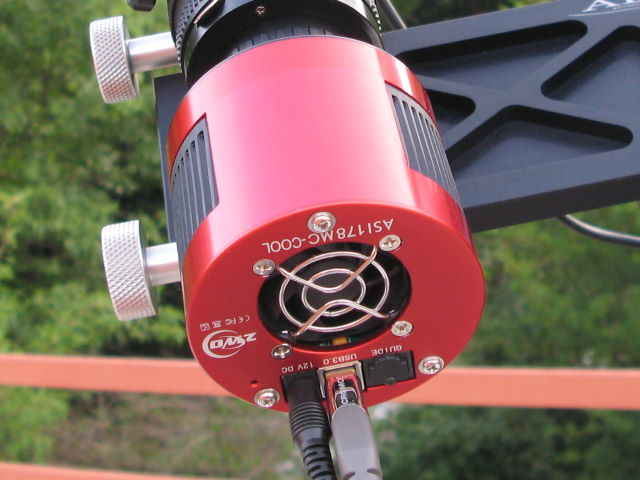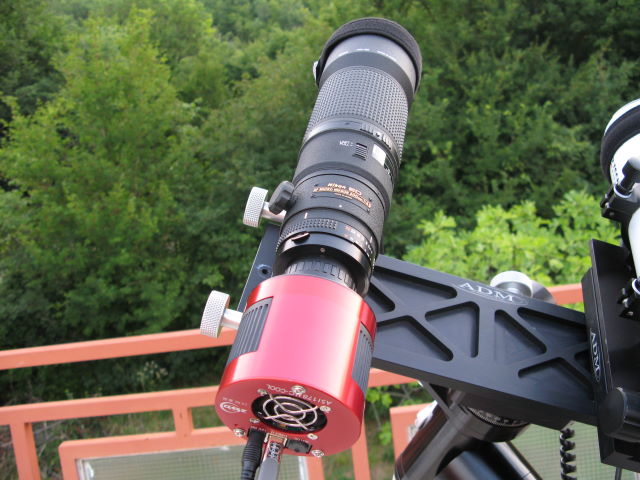
I always wanted an OSC camera to play and experiment with. However, I could never justify spending a lots of money on a second camera. CCD OSC cameras are quite expensive and, until recently, CMOS cameras were mostly good for planetary imaging only.
But lately, a number of affordable cooled CMOS cameras has appeared that promise to be very good at deep sky imaging also. So, I finally decided to get one. My choice fell on ZWO ASI178MC Cool, because of its smaller 2.4um pixels, 14 bit A/D converter and high resolution of 3096 X 2080 pixels. The camera is based on OSC variant of Sony CMOS IMX178 sensor with dimensions of 7.4mm X 5mm. Smaller sensor dimensions mean that you don't have to worry much about field curvature and illumination much, and that translates to simpler imaging setups.
Sony IMX178 sensor is back-illuminated, improving its sensitivity. With 2.4um pixels ASI178MC is really not a speed demon, but it is more sensitive than one would expect, and very useful for deep sky imaging. My camera is an earlier version, with a guider port, later versions have USB hub instead of it. The camera is delivered without 12V power adapter. 12V is used only for supplying power to regulated Peltier cooler that can cool the camera down to 35 - 40 degrees C bellow the ambient temperature. Camera electronics are powered via USB port. Stable power supply is very important for the best results with the camera. I strongly recommend you to connect the camera to USB3.0 port, not only because it is much faster, but it can also supply the camera with 900mA of current (compared to 500mA that USB2.0 port can provide).

